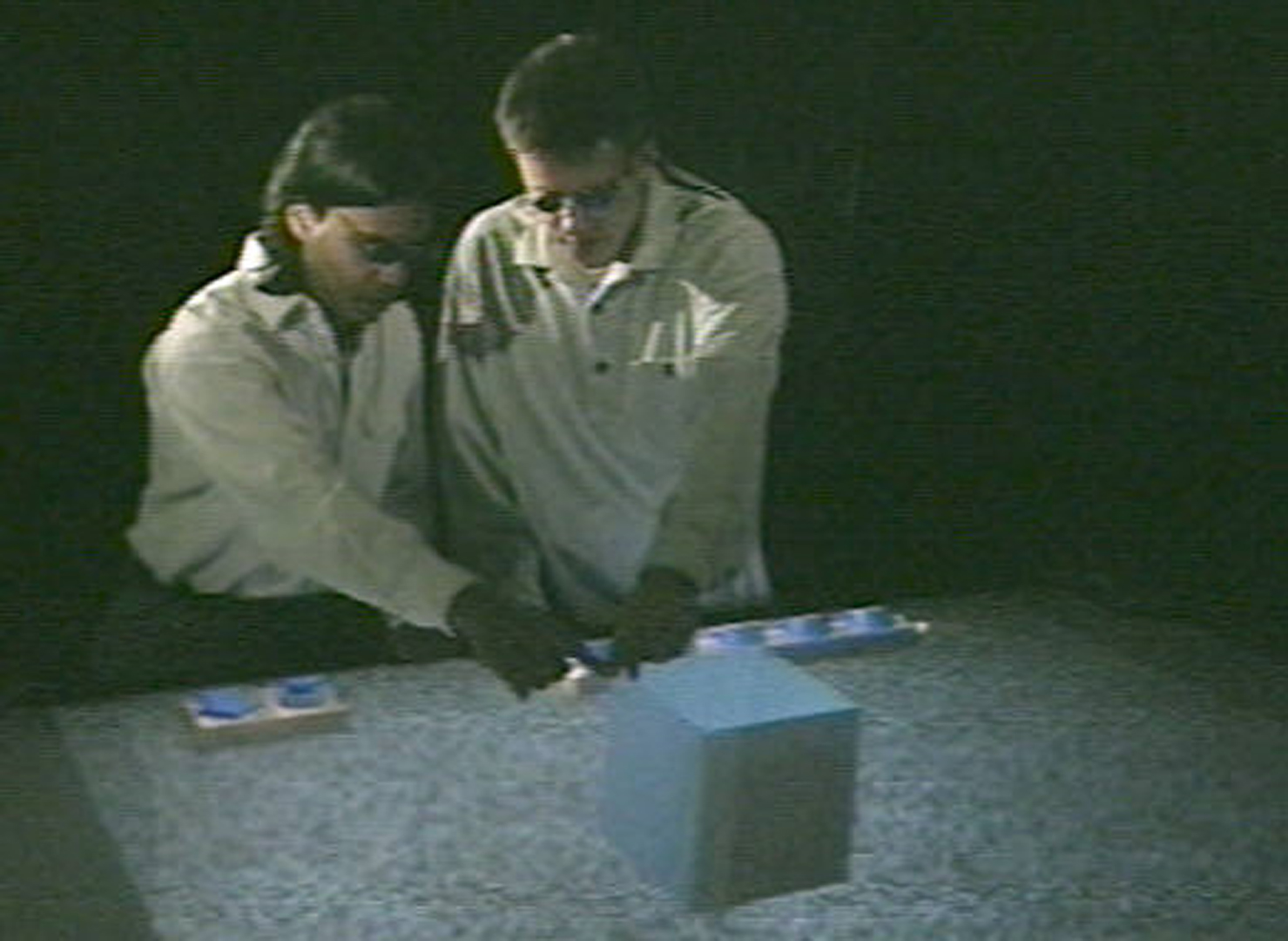“The two-user Responsive Workbench: support for collaboration through individual views of a shared space” by Agrawala, Beers, McDowall, Fröhlich, Bolas, et al. …
Conference:
Type(s):
Title:
- The two-user Responsive Workbench: support for collaboration through individual views of a shared space
Presenter(s)/Author(s):
Abstract:
We present the two-user Responsive Workbench: a projection-based virtual reality system that allows two people to simultaneously view individual stereoscopic image pairs from their own viewpoints. The system tracks the head positions of both users and computes four images – one for each eye of each person. To display the four images as two stereo pairs, we must ensure each image is correctly presented to the appropriate eye. We describe a hardware solution to this display problem as well as registration and calibration procedures. These procedures ensure that when two users point to the same location on a virtual object, their fingers will physically touch. Since the stereo pairs are independent, we have the option of displaying specialized views of the shared virtual environment to each user. We present several scenarios in which specialized views might be useful.
References:
1. Sara A. Bly. A use of drawing surfaces in different collaborative settings. In Proceedings of ACM CSCW’ 88 Conference on Computer-Supported Cooperative Work, Synchronous Communication, pages 250-256, 1988.
2. Susan E. Brennan. Conversation as direct manipulation: An iconoclastic view. In Brenda Laurel, editor, The Art of Human Computer Interface Design, pages 393-404. Addison-Wesley, 1990.
3. steve Bryson. Measurement and calibration of static distortion of position data from 3D trackers. In Virtual Reality course notes, SIGGRAPH 93, 1993.
4. Carolina Cruz-Neira, Daniel J. Sandin, and Thomas A. De- Fanti. Surround-screen projection-based virtual reality: The design and implementation of the cave. In James T. Kajiya, editor, Computer Graphics (SIGGRAPH ’93 Proceedings), volume 27, pages 135-142, August 1993.
5. Lawrence D. Cutler, Bernd Fr6hlich, and Pat Hanrahan. Two-handed direct manipulation on the responsive workbench. 1997 Symposium on Interactive 3D Graphics, 1997.
6. Morteza Ghadisaedy, David Adamczyk, Daniel J. Sandin, Robert V. Kenyon, and Thomas A. DeFanti. Ultrasonic calibration of a magnetic tracker in a virtual reality space. In Proceedings of the IEEE Virtual Reality Annual International Symposium, pages 179-188. IEEE, 1995.
7. Wolfgang K~ger, Christina-A. Bohn, Bernd Fr6hlich, Heinrich Schiith, Wolfgang Strauss, and Gerold Wesche. The responsive workbench: A virtual work environment. IEEE Computer, pages 42-48, July 1995.
8. Wolfgang K~ger and Bernd FriShlich. The responsive workbench. IEEE Computer Graphics andApplications, pages 12- 15, May 1994.
9. Mark A. Livingston and Andrei State. Magnetic tracker calibration for improved augmented reality registration. To appear in Presence, October 1998.
10. Kennneth Meyer, Hugh. L. Applewhite, and Frank A. Biocca. A survey of position trackers. Presence, pages 173-198, 1992.
11. J. C. Tang. Listing, drawing and gesturing in design: A study of the use of shared workspaces by design teams. Phd thesis, Mechanical Engineering, Stanford University, California, April 1989. Also available as research report SSL-89-3, Xerox Palo Alto Research Center, Palo Alto, California.




